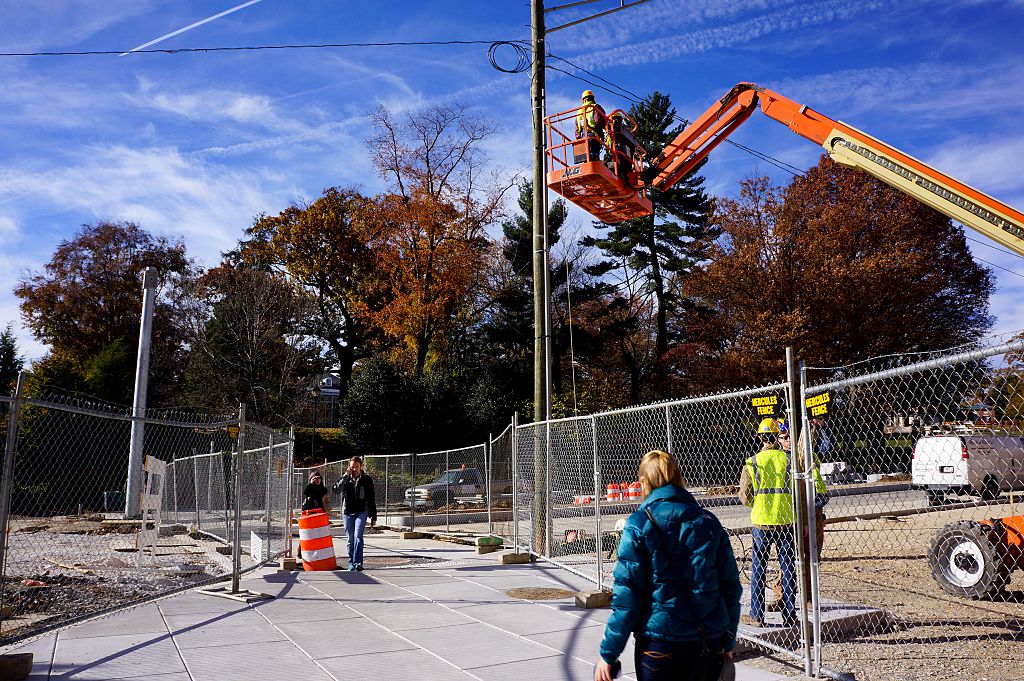
Last semester, I realized how much construction on my college campus impacted my daily routines at Vanderbilt. In the early morning, when the sun had not yet risen, I would fear walking in areas near the construction of Kirkland Hall, one of the areas under renovation. At night, my friends and I realized the lack of lighting at the construction areas near the library felt like an additional burden. We started exchanging locations and forming groups to walk back to our dorms.
Well before women started stepping foot on college campuses, they have been adhering to the rape schedule—the ways women are culturally conditioned to make changes in their daily lives in order to avoid sexual assault. This brings to light what steps colleges and universities should take in order to aid students negatively impacted by living in a rape culture.
The Vanderbilt administration considers campus safety and general safety issues by highlighting construction projects and pedestrian circulation. When speaking to several young women on college campuses, they shared how construction and campus safety have played a role in their daily lives. The young women spoke to their school’s environments, as well as issues relevant to the location of their school, be it urban or suburban.
This is not just a fear among students on my campus in Nashville—called “a city of cranes” due to the construction and constantly evolving skyline. Ironically, in my hometown, New York City, scaffolding has both advantages and disadvantages to pedestrians: For one, skillful pedestrians can avoid getting wet on rainy days. However, at night, this shelter can turn sinister, due to the combination of less pedestrian traffic and worse lighting.
Harassment’s Gender Divide
The gender divide on safety is evident, according to Inside Higher Ed: Of students surveyed, 22 percent of women felt very safe in the area surrounding campus, while 33 percent of men felt similarly, according to a recent survey by Student Voice. The lack of comfort many young women feel walking on or around their campus permeates their day-to-day lives.
Srabana, a first-year graduate student at Mercyhurst University in Erie, Pa., said she feels her graduate school is safer than her undergraduate experience at a satellite campus of Penn State in Abington. She found the satellite campus to have more construction, which made her feel more unsafe at night.
“I was catcalled there, as were other women,” said Srabana.
While she initially lived in an off-campus apartment, she ended up moving back home and commuting due to safety concerns.
While women’s fears of a perpetrator lurking in the bushes are certainly valid, it strays far from the vast majority of survivor’s experiences with sexual violence.
Eve, a junior at Columbia University in New York City, spoke about the difference between being off-campus and on-campus. During her freshman year living on campus, she felt safe walking back to her dorm but does not feel as comfortable returning home at night now that she lives off campus. She said she tries “to avoid [scaffolding] by crossing the street or going around it.”
On the other side of the U.S., Isabella, a sophomore at Stanford University in Palo Alto, Calif., has a different experience than her counterparts on New York City campuses. She said she and most of her peers bike around the large campus. She also feels comfortable walking back on campus and knows that the school provides a free ride service across campus nightly.
While a Graduate School of Education is being built in the center of campus, Isabella has not found taking detours to feel unsafe. She said, “The detours are about as well lit as other parts of campus and everyone is taking the detours, so it’s probably equally as populated.” Yet, she noted that Stanford is a more private campus with many campus police present, which she is grateful for.
“A few years ago, with Black Lives Matter, there was a big call to reduce police presence on campus. I personally don’t believe in this. I think they are a vital part of campus safety,” said Isabella.
Street Harassment: More Than a Gendered Issue
Of course, the vast majority of sexual violence in college communities is not happening in spaces where law enforcement even has the ability to be present—not to mention the effect law enforcement has on people of color and other minoritized populations. Over half of sexual assaults occur at or near the victim’s home, with 15 percent occurring in public spaces. It is not just dark scaffolding that ignites women’s justifiable fears.
While the assaults we usually hear about in the media often occur at the hands of a stranger, 80 percent of rapes are committed by someone known to the victim. For minors, it is as high as 93 percent, according to data released by RAINN. While women’s fears of a perpetrator lurking in the bushes are certainly valid, it strays far from the vast majority of survivor’s experiences with sexual violence.
Catcalling is also more than just a gendered issue, especially when talking about construction on a college campus. Roughly half of workers in construction are people of color, so the criminalization of street harassment inadvertently harms these populations while failing to target the root of a cultural issue through education.
Street harassment also disproportionately harms women of color: Rates of sexual assault and rape are significantly higher among women of color than they are in white women. Racist street harassment also adds another threatening layer for women, as shown by Catcalls of NYC.
Queer communities are also at a higher risk for sexual harassment and violence. Because street harassment is based on assumed gender presentation, people who present outside the binary are more likely to be harassed. However, 57 percent of transgender and non-binary people say that they feel uncomfortable asking law enforcement for help.
Impacts of Campus Police Presence
Farah, a recent graduate of the University of Pennsylvania in Philadelphia, said she has felt less safe with campus police.
“I’ve had traumatic interactions with the Penn Police, which makes it difficult to feel comfortable in both buildings and outdoor spaces on campus. Penn Police patrol a large chunk of the surrounding community, so I don’t feel safe off-campus either,” said Farah.
She does not worry about leaving campus at a specific time to get back home. She attributes the well-lit campus and the large number of people outside to Penn being an urban campus. Yet, within the urban campus environment, she feels upset with the university’s response to the surrounding area of West Philadelphia, noting that many assume detouring off of Penn’s campus to be less safe.
“Penn has demonized West Philly as an unsafe and crime-ridden area when in reality, it’s a vibrant community that I call home. The university should not teach us to fear the surrounding neighborhood, and in addition to student safety, they should care about the safety of Philadelphians in our community, whom the institution has historically displaced, overpoliced and committed violence against,” said Farah.
She hopes that Penn directs funding from its police force to reinvest in the West Philadelphia community, pay PILOTs (Payments in Lieu of Taxes), and focus on police-free strategies to advance campus safety.
“This is what would truly make me feel safe,” said Farah.
Institutional Responsibility in Combating Sexual Harassment
Colleges and universities across the U.S. have a responsibility to keep their students safe from sexual harassment and violence. While creating well lit walkways and safe paths home for students is important, universities would do well to target the issue by working to change campus culture surrounding sexual assault and rape.
Universities suspiciously low rates of sexual assault may be because most students do not feel comfortable reporting. Creating communities where women do not feel the need to travel in groups, constantly share locations and operate on a rape schedule seems seldom attainable. But, fostering communities through education, rather than overpolicing, has the potential to lead to campuses where women do not spend their time commuting in fear.
Livia Follet provided editorial assistance with this piece.
Up next:
U.S. democracy is at a dangerous inflection point—from the demise of abortion rights, to a lack of pay equity and parental leave, to skyrocketing maternal mortality, and attacks on trans health. Left unchecked, these crises will lead to wider gaps in political participation and representation. For 50 years, Ms. has been forging feminist journalism—reporting, rebelling and truth-telling from the front-lines, championing the Equal Rights Amendment, and centering the stories of those most impacted. With all that’s at stake for equality, we are redoubling our commitment for the next 50 years. In turn, we need your help, Support Ms. today with a donation—any amount that is meaningful to you. For as little as $5 each month, you’ll receive the print magazine along with our e-newsletters, action alerts, and invitations to Ms. Studios events and podcasts. We are grateful for your loyalty and ferocity.





